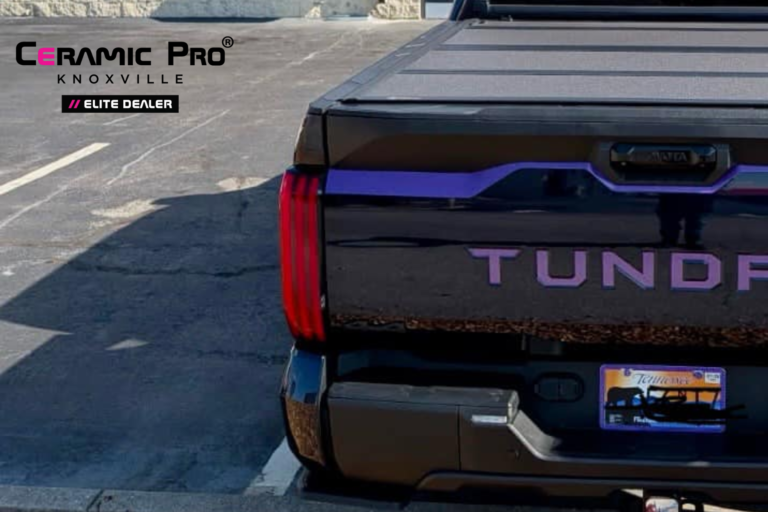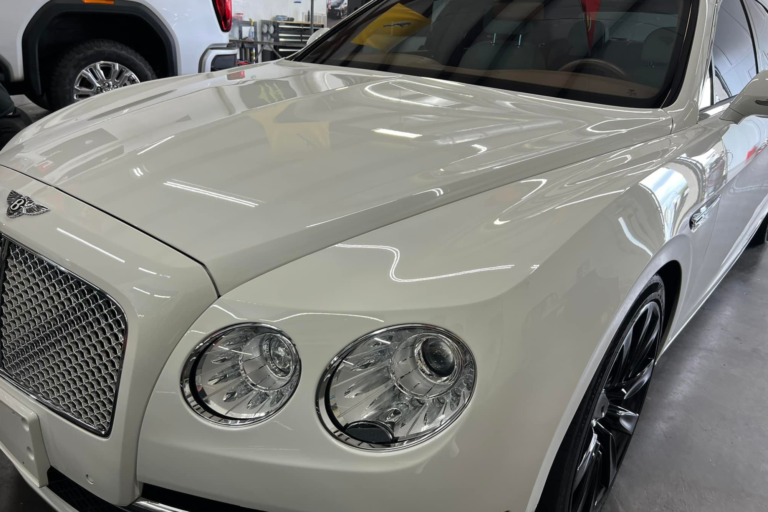When it comes to selecting the ideal window tint darkness for your vehicle, the level of tint you choose can greatly impact not only the aesthetics but also the functionality of your tint. By understanding the nuances of different tint darkness levels and how they can affect factors like visibility, heat reduction, and privacy, you can make a more informed decision that aligns with your specific needs. So, how do you navigate this maze of choices and make sure you pick the perfect shade that ticks all the boxes for your window tinting requirements?
Key Takeaways
- Consider legal regulations for tint darkness compliance.
- Balance privacy needs with exterior visibility requirements.
- Evaluate heat reduction and UV protection priorities.
- Enhance aesthetics by selecting the right tint of darkness.
- Opt for maximum visibility while reducing glare for safety.

Legal Regulations for Window Tint Darkness
When selecting window tint darkness, ensuring compliance with legal regulations is vital to avoid fines or restrictions on your vehicle. Understanding legal restrictions is essential to guarantee that your window tint meets the law. Each state or country has specific regulations regarding how dark the tint on vehicle windows can be. These regulations are in place to uphold safety on the roads.
Safety concerns play a significant role in determining the permissible window tint darkness. Darker tints can obscure visibility, especially at night or in adverse weather conditions. This reduced visibility can lead to accidents and jeopardize road safety for both you and other drivers. Adhering to legal restrictions concerning window tint darkness helps to alleviate these safety concerns.
Before choosing a window tint darkness level, research the legal restrictions in your area. You can usually find this information on official government websites or by consulting with professionals who are knowledgeable about window tint regulations. By understanding and following these regulations, you can ensure that your vehicle remains safe and compliant with the law. Remember, safety should always be the top priority when selecting window tint darkness for your vehicle.
Consider Your Privacy Needs
When selecting window tint darkness, your privacy needs are essential. Consider the levels of privacy required, how much exterior visibility you want to maintain, and the interior comfort you desire. These factors will guide you in choosing the right tint darkness for your windows.
Privacy needs are a crucial factor in deciding on the darkness of your window tint. The level of privacy you require will determine how dark the tint should be.
Maintaining exterior visibility is also important when selecting window tint darkness. Balancing privacy with the ability to see outside can impact your tint choice.
Lastly, your interior comfort is influenced by the darkness of your window tint. The right tint of darkness can help regulate the temperature inside your vehicle and reduce glare, enhancing your overall comfort while driving.
Privacy Levels Needed
Consider your privacy needs when selecting the darkness level for window tinting to maximize satisfaction with the level of obscurity provided. Privacy considerations play an essential role in determining the appropriate tint of darkness.
If you desire increased privacy during daylight exposure, opting for a darker tint can shield the interior of your space from prying eyes. Assess your security requirements alongside visibility preferences to strike a balance that meets your expectations.
The right tint of darkness can enhance the sense of belonging and comfort within your surroundings. By carefully evaluating your privacy needs, you can make sure that the window tint darkness level aligns with your preferences while maintaining adequate daylight exposure and security measures.
Exterior Visibility Concerns
To enhance exterior visibility concerns and address your privacy needs effectively, assess the level of obscurity required when selecting window tint darkness.
Safety concerns should be a top priority when considering the darkness of your window tint. Darker tints may reduce exterior visibility, potentially impacting your ability to see pedestrians, cyclists, or other vehicles. Reflection issues can also arise with very dark tints, especially at night, which could lead to visibility challenges for other drivers.
However, it’s important to find a balance that provides the privacy you desire without compromising safety. Additionally, consider glare reduction and nighttime driving considerations; overly dark tints can exacerbate glare from headlights, streetlights, or other sources, affecting your visibility during night driving.
Interior Comfort Requirements
To guarantee ideal interior comfort requirements that also address your privacy needs effectively, assess the level of tint darkness suitable for your windows. Achieving the perfect balance between comfort level and temperature control is crucial. Darker tints can greatly reduce the amount of heat entering your vehicle, keeping the interior cooler during hot days and improving overall comfort.
Assess Heat Reduction Requirements
When determining the appropriate window tint darkness for your vehicle, it’s crucial to first evaluate your specific heat reduction requirements. Conducting an energy efficiency assessment and a cost-benefit analysis can help you determine the level of heat rejection needed. Consider the climate you reside in, as this will impact the amount of heat that needs to be blocked from entering your vehicle.
For areas with hot climates, a higher level of heat rejection is typically required to maintain a comfortable interior temperature. Tints with higher Total Solar Energy Rejection (TSER) percentages are more effective at blocking out heat. On the other hand, if you live in a milder climate, you may opt for a window tint with a lower TSER rating.
It’s essential to strike a balance between heat reduction capabilities and visible light transmission. While darker tints may offer better heat rejection, they can also reduce visibility, especially at night. Understanding your heat reduction requirements and considering factors like cost-benefit analysis and climate considerations will guide you toward selecting the ideal window tint darkness for your vehicle.
Think About UV Protection
Consider the impact of UV protection when selecting the appropriate window tint darkness for your vehicle. UV protection is an essential factor to contemplate as it offers numerous benefits, not only for your vehicle but also for your skin health. Window tints with UV protection help block harmful ultraviolet rays from entering your car, reducing the risk of skin damage and skin cancer from prolonged sun exposure. By shielding your skin from UV radiation, window tints contribute to maintaining healthier skin and reducing the signs of premature aging caused by the sun’s rays.
In addition to the skin health considerations, UV protection provided by window tints also helps in preserving the interior of your vehicle. Prolonged exposure to UV rays can lead to fading and deterioration of your car’s upholstery, dashboard, and other surfaces. By investing in window tints that offer UV protection, you not only safeguard your skin but also extend the lifespan of your vehicle’s interior components, keeping them looking newer for longer.
When selecting the right window tint darkness for UV protection, opt for tints that are specifically designed to block UV rays effectively. Look for tints with a high UV protection rating to guarantee maximum benefits for both your skin and your vehicle’s interior. By prioritizing UV protection in your window tint selection, you’re making a wise choice for your well-being and the longevity of your vehicle.
Evaluate Aesthetics and Style
When contemplating window tint darkness, you must assess how it impacts the style of your vehicle. The aesthetics of the tint play a vital role in enhancing the overall look and feel of your car. Selecting the appropriate tint of darkness can greatly influence the visual appeal and style of your vehicle.
Style Impact on Tint
To enhance the overall look of your vehicle, it’s important to carefully evaluate how the window tint darkness will complement its aesthetics and style. The impact of window tint on style is vital in improving the overall design choices of your vehicle.
Aesthetics and Window Tint
Select the appropriate darkness level for your window tint by evaluating how it enhances the aesthetics and style of your vehicle. When considering aesthetics and window tint, think about:
- Color Coordination: Match the tint darkness with the color of your vehicle for a cohesive and stylish look.
- Light Transmission: Make sure the tint darkness allows for the best visibility and light passage, maintaining a balance between style and functionality.
- Style Enhancement: Choose a tint darkness that complements the overall design of your vehicle, adding a touch of sophistication and elegance.
Choosing Tint Darkness
How can you ensure that the darkness level of your window tint enhances the aesthetics and style of your vehicle effectively?
When choosing the tint darkness, consider the cost considerations and brand options available. Opting for a reputable brand guarantees quality and durability, which can contribute to the overall stylish appearance of your vehicle.
Additionally, the darkness level should complement the design and color of your car, creating a cohesive and sleek look. It’s crucial to strike a balance between style and functionality, making sure that the tint darkness meets legal regulations while still achieving the desired aesthetic effect.
Opt for Optimal Visibility
For best visibility, make sure that the window tint darkness you choose complies with local regulations and doesn’t impede your ability to see clearly in various lighting conditions.
- Ensure Essential Visibility: Select a window tint darkness level that allows for maximum visibility both during the day and at night, maintaining a balance between privacy and clear vision.
- Consider Safety Concerns: Opt for tint darkness that doesn’t compromise your ability to see pedestrians, cyclists, or other vehicles on the road, ensuring safe driving conditions.
- Prioritize Clarity Enhancement: Choose a window tint darkness that enhances the clarity of your view, reducing distractions and promoting a clear line of sight for an improved driving experience.
When it comes to optimizing visibility through window tint darkness, prioritizing safety concerns and clarity enhancement is vital. By selecting the right darkness level, you can effectively reduce glare, enhance visibility, and maintain a safe driving environment. Remember to adhere to local regulations and choose tint darkness that complements your driving needs while ensuring essential visibility in all lighting conditions.

Factor in Maintenance and Durability
To ensure the longevity and peak performance of your window tint, it’s vital to take into account the maintenance requirements and durability of the tint material. Maintenance considerations play a significant role in making sure that your window tint remains in excellent condition for an extended period. Regular cleaning using a mild, soapy solution and a soft cloth can help prevent the buildup of dirt, dust, and grime on the tinted surface, which can deteriorate its appearance and functionality over time. Additionally, avoiding abrasive cleaning tools and harsh chemicals is essential to prevent scratching or damaging the tint film.
Longevity factors also come into play when selecting the right window tint darkness. High-quality tint materials with UV-resistant properties offer better durability and longevity compared to lower-grade options. These materials are designed to withstand prolonged exposure to sunlight without fading or deteriorating quickly. Moreover, choosing a reputable brand known for its durable window tints can provide added assurance of longevity and performance.
Choose the Right Tint Material
When considering the right tint material for your windows, prioritize selecting high-quality options with UV-resistant properties to ensure durability and longevity. Different types of tint materials offer various benefits, so it’s crucial to choose wisely.
- Tint Material Comparison: Compare different tint materials such as dyed, metalized, carbon, and ceramic to understand their unique characteristics and benefits for your specific needs.
- Installation Techniques: Look for tint materials that are easy to install, whether you choose to do it yourself or hire a professional. Some materials may require special techniques for proper installation.
- Long-Term Durability and Maintenance Tips: Opt for tint materials known for their long-lasting performance to prevent frequent replacements. Additionally, follow maintenance tips provided by manufacturers to maintain the tint in top condition over time.
Seek Professional Installation Advice
Consider consulting with a professional installer to ensure precise application and peak performance of your selected window tint. Professional recommendations can make a significant difference in the outcome of your tint installation. These experts have the knowledge and experience to suggest the best installation techniques for your specific tint material and desired darkness level.
When it comes to tint application methods, professional installers often have access to specialized tools and equipment that guarantee a flawless finish. They can also provide expert advice on how to properly prepare the windows, apply the tint evenly, and avoid common mistakes that may compromise the tint’s effectiveness.
Test Samples Before Committing
Before finalizing your decision on window tint darkness, make sure to test samples beforehand. Utilize sample tint swatches to compare different darkness levels and assess how they interact with natural light.
This preliminary evaluation can help you make an informed choice that aligns with your preferences and needs.
Sample Tint Swatches
To accurately gauge the window tint darkness that best suits your needs, take the time to examine sample tint swatches under various lighting conditions. When considering tint application, keep these factors in mind:
- Lighting Conditions: Assess how the tint swatches appear in both natural and artificial lighting to understand their visibility during different times of the day.
- Shade Comparison: Place different tint swatches side by side to compare the darkness levels and choose the one that complements your vehicle’s aesthetics and preferences.
- Interior Assessment: Look at how the tint interacts with your vehicle’s interior colors to ensure a smooth and harmonious look.
Compare Tint Darkness
Evaluating tint darkness levels by testing sample swatches is crucial to accurately determine the ideal tint for your vehicle windows. When comparing darkness levels, consider how much light transmission each sample allows.
Darker tints may provide more privacy and heat reduction but can hinder visibility, especially at night. Lighter tints offer better visibility but may not provide as much privacy or heat rejection.
To select the best tint for your needs, place sample swatches on your windows and observe them in various lighting conditions. Note how each darkness level affects the interior brightness and your ability to see outside.
This hands-on approach will help you make an informed decision before committing to a specific tint of darkness for your vehicle.
Natural Light Evaluation
When evaluating tint darkness levels for your vehicle windows, it’s imperative to conduct a natural light evaluation by testing sample swatches before finalizing your decision.
- Natural Light Assessment: Place different tint samples on your windows and observe how each affects the amount of natural light entering your vehicle.
- Window Tint Benefits: Take note of how each tint’s darkness level enhances privacy and reduces glare from sunlight.
- Visual Comfort: Evaluate how the tint darkness impacts your visibility from inside the vehicle during different times of the day.
Conducting a natural light assessment will help you make an informed decision that not only complements your vehicle’s aesthetics but also provides the desired benefits of window tinting.
Final Thoughts
Like a master painter selecting the perfect hue for their canvas, choosing the right window tint darkness for your vehicle is a meticulous process that requires attention to detail and consideration of various factors.
By carefully balancing legal regulations, privacy needs, heat reduction requirements, UV protection priorities, aesthetics, maintenance, durability, tint material selection, and professional guidance, you can create a harmonious blend of style, comfort, and protection that enhances your driving experience.





